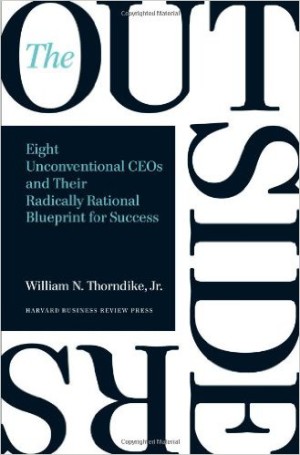If you are in leadership then you probably spend time thinking about resource allocation. To simplify that phrase, you probably have had to decide where to focus your energy, talent, and capital. This is true whether you run a Fortune 500 company or coach a little league team.
It’s one of the most important things a leader has to do. Taking the time to do it isn’t always easy — there are so many things to do that seem urgent. But reflecting on our priorities is a necessary habit we all need to develop.

I recently read The Outsiders: Eight Unconventional CEOs and Their Radically Rational Blueprint for Success by William Thorndike. The book is focused on how eight CEOs transformed their companies by spending all their time focused on where to invest their available funds. They spent minimal time on keeping Wall Street happy, or even on the operations of their organization, and instead had a laser focus on where to be an investor.
It’s a good book and I recommend it. The stories are very corporate, of course, so they might not seem applicable to the owner/operator or the nonprofit leader. But they are helpful if you ignore the corporate-speak and focus on the basics.
At the end of the book there is a checklist of ten key things to keep in mind when deciding on resource allocation. I’ve edited them below to make it shorter:
1. The allocation process should be CEO led.
2. Start by determining the minimum acceptable return for an investment.
3. Calculate what the return would be on all other opportunities and rank them according to the inherent risk.
4. Calculate the return of buying back your own stock.
5. Focus on after-tax returns.
6. Set conservative cash and debt levels so you don’t put the organization at risk.
7. Use a decentralized model for your management.
8. Retain cash in the business only if you can generate returns above your goals set in #3 above.
9. If you don’t have any good investment options, consider paying a dividend to your stock holders.
10. When prices are high, it’s okay to consider selling your business. It’s also okay to close under performing units.
Seems simple, right? There is no magic formula above but these are ten very good rules to follow as you think about where to invest your energy, talent and capital. I like the discipline of the process — follow those rules and mistakes will be minimized.
But here’s the thing. As I said, the list is very corporate. If you run a small business or non profit, who are your stock holders and how would you ever buy back your own stock?
I was thinking about this and realized it’s a whole series of blog posts worth exploring. Translating the corporate-speak into something the rest of us mere mortals can understand would be helpful. So in future posts I’ll focus on one or more of the points above and share how the rules might apply to organizations other than a corporate structure. Stay tuned for more!

